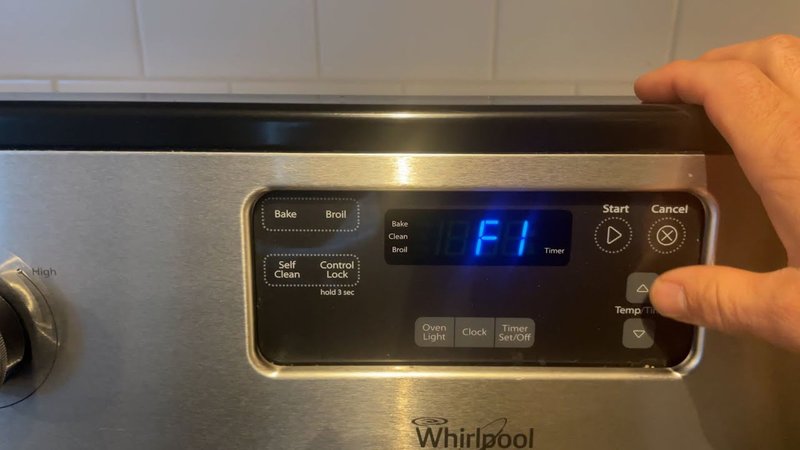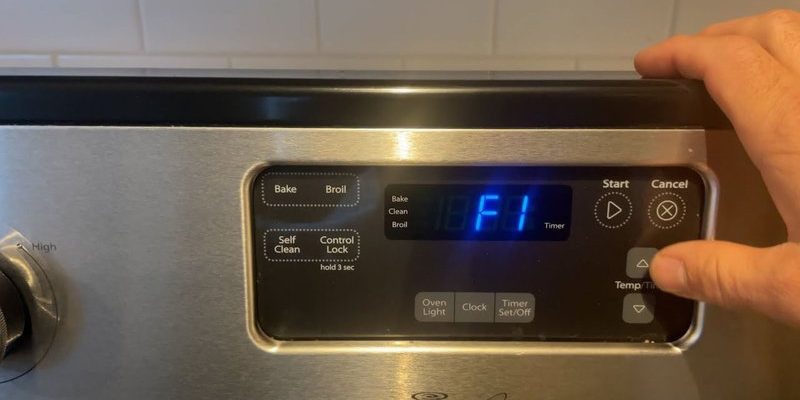
Picture this: you’re about to warm up leftover pizza, and instead of the usual hum of the microwave, you see “F1” glaring at you from the display. Frustrating, right? This code generally signals a problem with the internal circuit board, which can be as troublesome as a faulty heart in a robot. But the good news is, with a little bit of foresight and care, you can prevent running into this error in the future. Let’s break down how you can avoid seeing that pesky F1 code ever again by understanding common causes, maintaining your microwave, and taking preventative steps.
Understanding the Causes of Error Code F1
So, what exactly is error code F1 trying to tell us? Think of it as your microwave’s way of saying, “Hey, I need a little attention over here!” This error generally means there’s an issue with the microwave’s touchpad or control board. Much like how a computer might freeze due to a malfunctioning keyboard or a software glitch, your microwave can’t function properly if its control systems are acting up.
One potential reason for this error is *moisture*. Yes, it’s as simple as that. If moisture gets trapped behind the touchpad, it can cause the control board to malfunction, similar to how spilled coffee might short-circuit your laptop. Another possible cause is a power surge. Just like a lightning strike might knock out your home internet, a sudden spike in electricity can mess with the microwave’s internal systems, resulting in that dreaded F1 error code.
Now, you might be thinking, “How does moisture even get inside there?” Everyday use, especially if you’re frequently heating liquids or foods with high moisture content, can cause steam to seep into the control panel. Not to mention, a kitchen is often a humid environment. Understanding these causes helps us see the importance of protecting and maintaining the microwave’s components.
Routine Maintenance and Care
Here’s the deal: your microwave, just like any other appliance, needs a bit of TLC to keep running smoothly. Regular maintenance can help ward off issues like the F1 error. Start by keeping the exterior clean and dry. After using the microwave, wipe down the inside with a dry cloth to prevent moisture buildup. This simple step is akin to drying your dishes to prevent water spots—easy and effective.
Another tip is to avoid slamming the microwave door. It might sound trivial, but forcefully closing the door can jostle internal components, potentially leading to long-term issues with the control board. Treat your microwave gently, as you would when handling a delicate piece of electronics.
You should also consider using a surge protector. Remember how we mentioned power surges earlier? A surge protector can act as a buffer, much like how a helmet protects a cyclist’s head during a fall. It can prevent unexpected surges from reaching the microwave and causing internal damage. Investing in a good quality surge protector is a wise move that can save you from headaches down the line.
Preventative Measures for Future Use
So, how can we ensure our microwave stays happy and F1-free? Start by being mindful of the cooking time and power settings you use. Overcooking and constantly using high power levels can strain the microwave, similar to how overworking a car engine can lead to breakdowns. Use the appropriate settings for the food you’re heating.
Additionally, consider getting your microwave checked by a professional periodically. Like a routine dentist visit, a professional can spot potential issues before they become major problems. They can ensure that everything is running as it should, and give you peace of mind.
Lastly, stay informed about your microwave model. Knowing its quirks, much like understanding a friend’s personality, helps you anticipate potential problems. Keep the user manual handy for quick troubleshooting. Familiarity with your appliance can make a big difference in maintaining its longevity.
Wrapping Up and Looking Ahead
In the end, preventing the Whirlpool microwave error code F1 is about understanding your appliance, maintaining it with care, and being proactive. By following the maintenance and preventative tips we’ve discussed, you’ll not only avoid seeing that error code, but you’ll also extend your microwave’s life. Remember, just like any trusted companion, your microwave needs a little attention and understanding to keep it performing at its best.
So, the next time you pop that pizza slice in for a quick reheat, you can relax knowing you’re well-equipped to handle—and more importantly, prevent—any hiccups along the way. Here’s to many more years of effortless and error-free microwaving!
